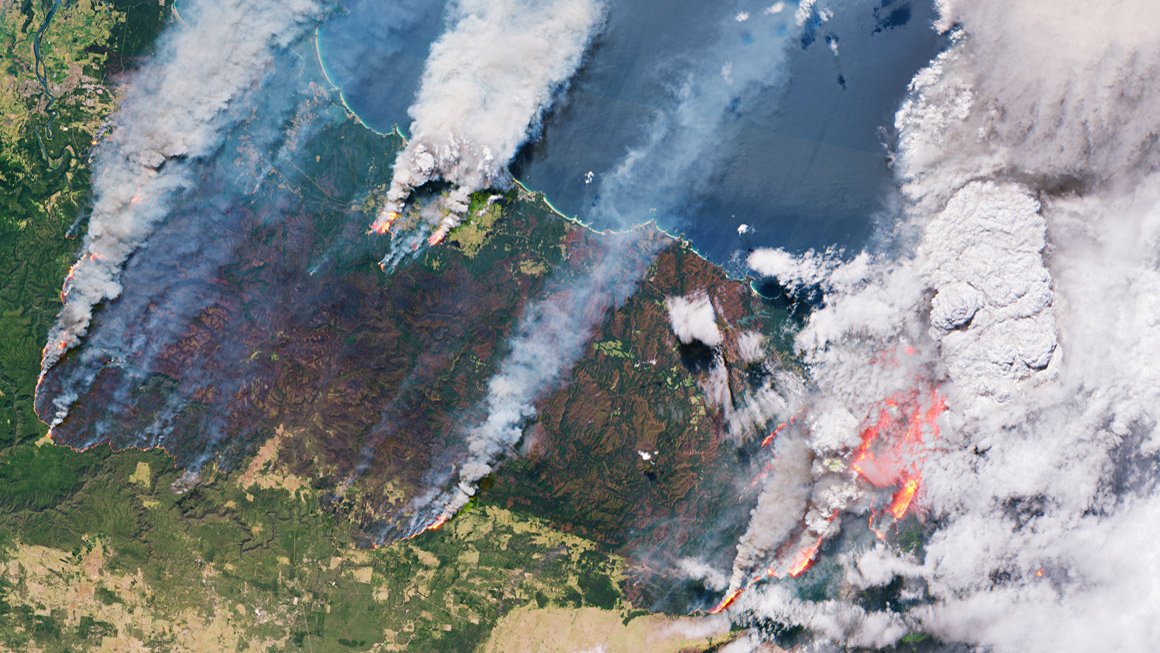UNIVERSITY PARK, Pa. — As Hurricane Dorian made landfall on Grand Bahama Island in 2019 and bushfires engulfed Australia in 2020, emergency teams were busy creating plans to best respond and provide relief to those affected by the disasters.
Many homes in the Bahamas were destroyed, displacing tens of thousands of people, and extreme flooding washed out roadways, covered the coastlines, and shut down a major airport. More than 11 million hectares of Australian land burned for days, destroying more than 2,000 homes and forcing thousands of residents to evacuate as the bushfires quickly spread and suffocated areas in thick, black smoke.
During both disasters and their aftermaths, federal, state, and local emergency management teams devised their relief and recovery plans using geospatial intelligence: satellite imagery of the Earth that is analyzed to track both natural and human movements over space and time.
Through the Penn State World Campus Master of Professional Studies in Homeland Security - Intelligence and Geospatial Analysis option, emergency managers can learn how to use geospatial intelligence when responding to natural disasters and other emergencies. The degree program is offered online in partnership with the Penn State College of Earth and Mineral Sciences.
“GEOINT allows emergency management teams to compare social media feeds, drone video, and satellite images of an area before and after a disaster has struck,” said Gregory Thomas, the head of Penn State’s intelligence and geospatial analysis option. “They can then analyze this information to see which areas are most affected and where to send first responders.”
Historically, GEOINT imagery was created and used in military and national defense sectors to monitor an adversary’s movements, strengths, and weaknesses, Thomas said. But thanks to advances in computer software technology that allow it to handle big data, such as geo-referenced social media and vast amounts of Earth images, geographic information systems have been adopted by emergency management, public safety, homeland security, and other domestic authorities.
Katherine Melton, a 2018 graduate of the master’s degree program, is a GIS analyst for a city government in Texas, and her work often involves public safety.
“GIS personnel and GIS tools are vital resources that can help mitigate incidents and emergency situations and are instrumental in supporting first responders and emergency management personnel involved in recovery and preparation efforts,” Melton said.
The course work consists of 11 courses, or 33 credits: three core courses that are part of the homeland security program at Penn State, four courses that are required for the intelligence and geospatial analysis option, three electives, and a capstone course.
Through the curriculum, students will be taught to analyze data to develop strategies to prevent, prepare for, and quickly respond to incidents.
Prior to graduation, students will be able to put their skills to use through a capstone experience. Students will use GIS and other technology to analyze an event, giving them the chance to gain real-world experience on a topic that is relevant to their career goals.
Melton attributed her success in the field to the analytical skills she learned through World Campus and the experience she gained using high-level imagery software in her classes.
“On a daily basis, I'm creating, maintaining, updating, and providing spatial services, data, and products to the public and city employees,” Melton said. “Without such skills, I may not have been the best candidate for this position. I’m proud I was able to meet the challenge and succeed."

